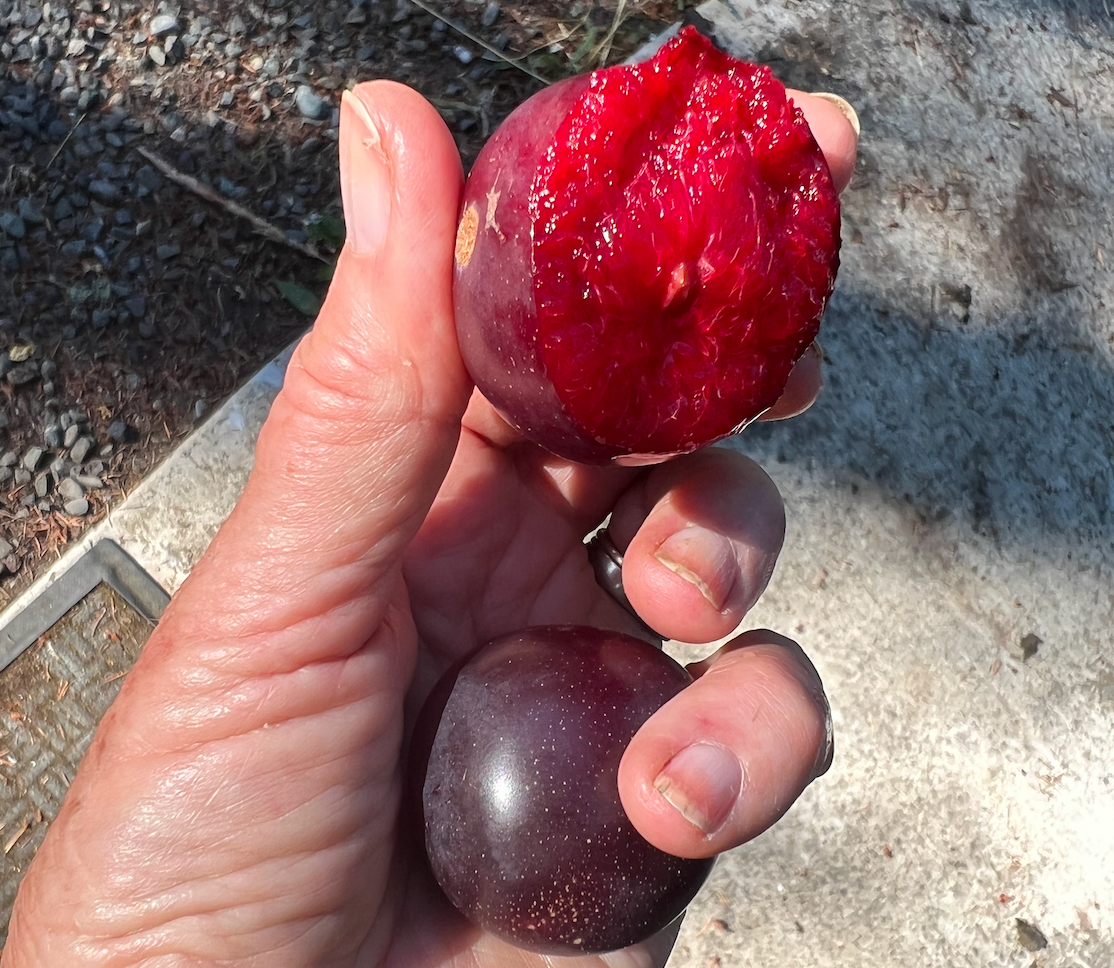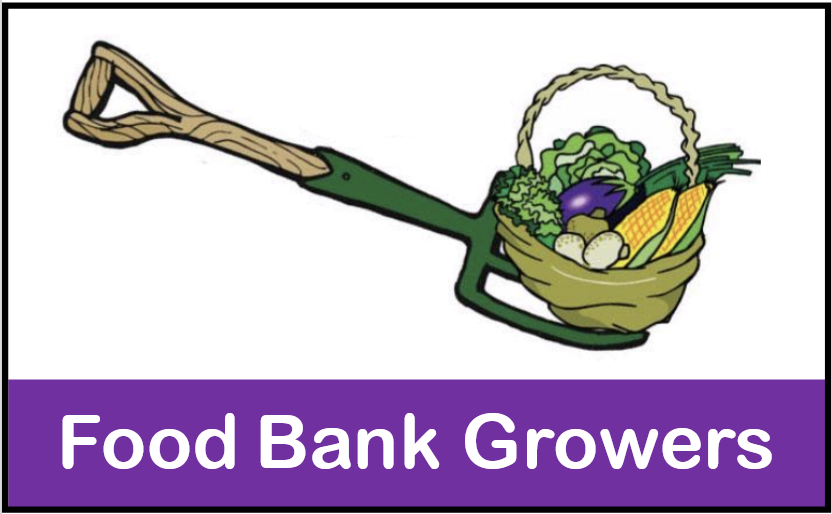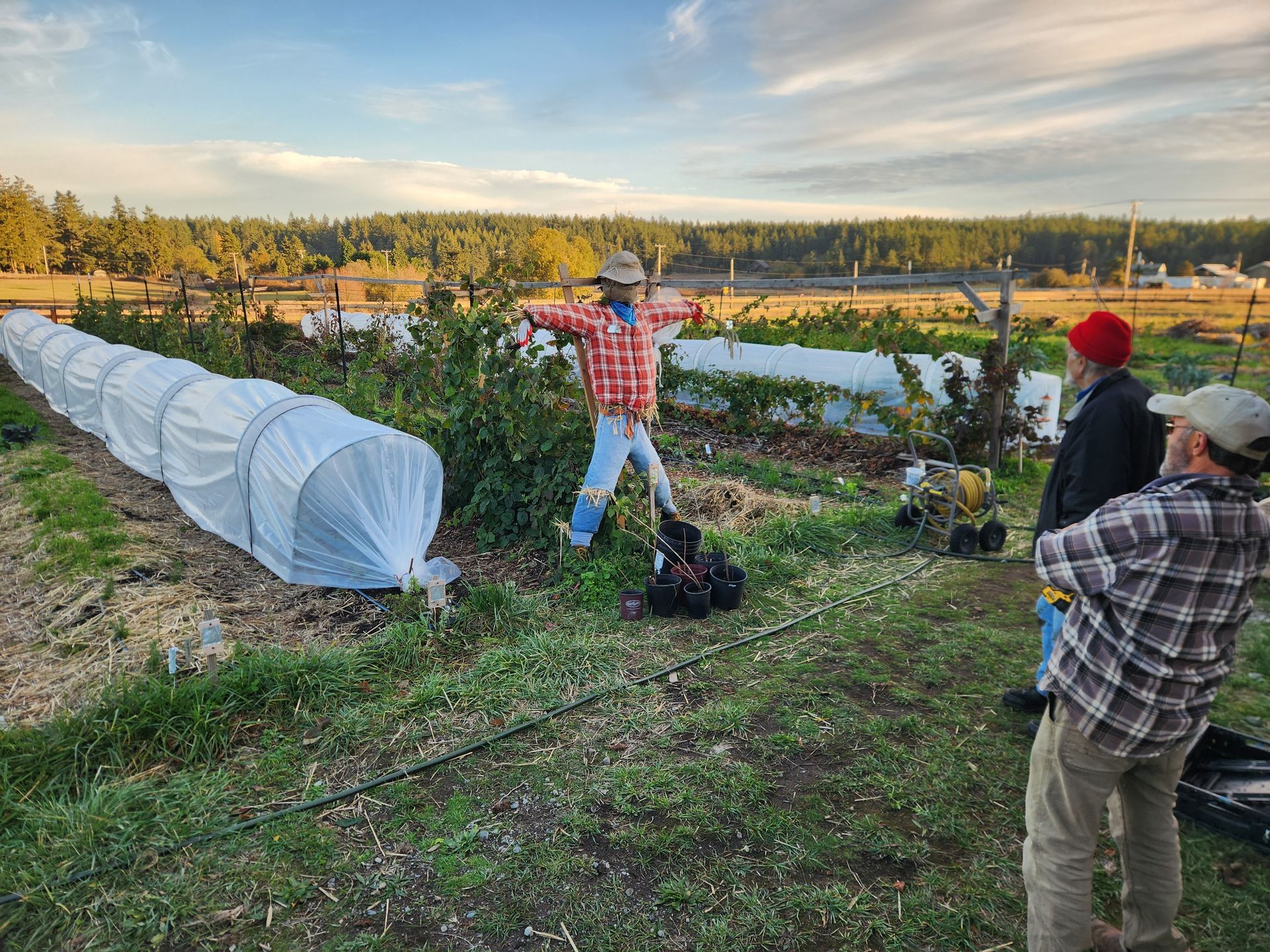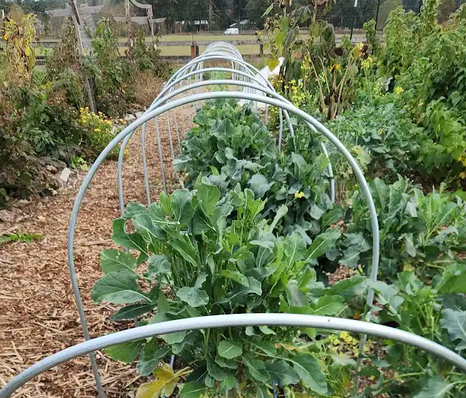Newsletter August 2023

What a tasty season
In this Issue...
- In the Garden this month…
- Year-to-Date Harvest Numbers
- On the Calendar - Upcoming Events
- Recent Postings
- How to Volunteer
In the Garden this August - By Dianna Wiklund, FBG Garden Coordinator
The temperature for August will be slightly warmer than average. The local average for August is a high of 70° and a low of 55° F. It is not looking like we will be setting any records. The rain forecast will be average as well which means not much if any. This is our driest month. Irrigation is a must, especially to get our fall/winter garden going.
August is mainly about harvesting and preserving. FBG’s focus is on harvesting/gathering in what we have planted and giving to people so they can preserve and use it. For those who want to have more information about preserving the harvest - WSU extension has many pamphlets with research based and tested recipes available, most are free. https://pubs.extension.wsu.edu/consumer-food-safety (Follow the links from: health and wellness; consumer food safety; canning and freezing.) WSU has also recommended “The USDA Guide to Home Canning”, “So Easy to Preserve” and “The Ball Blue Book”.
Garden tasks:
- Harvest: This is when my beans really get going. I harvest green beans every other day throughout the month. You can harvest some new potatoes but remember they will only keep for about a week. Early potatoes may be ready soon. Once the plant dies back, stop watering for two weeks before harvesting to allow the skins to toughen up a bit.
- Mulch: Remember to mulch well under your winter squash. A layer of straw can help keep weeds down, soil moist, and keep your squash up out of the dirt.
- Pollination: I have found I have better luck with my squash if I hand pollinate. Take the stamen from the male flower and apply the pollen to the female. This also reduces cross pollination. Don’t forget squash blossoms are very tasty.
- Plant: From seed: lettuce, spinach, other salad greens, turnips for greens, beets, carrots, green bunching onions, overwintering cabbage. We can start transplanting out starts from last month ( keep them moist). Fall veggies are sown in early August and overwintering in late August.
- Cover crops: If you are not replanting areas you have fully harvested then it is time to think about cover crops. Some cover crops can be partially harvested like the tendril of the field peas. Think about what your soil needs to be healthy next year. Do you need to break up clay soil with daikon radishes? Do you need to get nitrogen into your soil with legumes and clover? Are you looking for a green manure to turn in early next spring to bulk up your organic matter? Do you want a beneficial insect crop like calendula? Remember to think about your crop rotation when cover cropping. Don’t plant brassicas like mustard where your cabbages were or are going to be next year. Don’t overdo nitrogen where you are planning to plant beans and peas as you will get a poor fruit set.
Happy Gardening!
Have questions/comments?
Dianna can be reached at: FBGgardencoordinator@gmail.com
Year-to-Date Harvest - 3,175 pounds
2729 Volunteer hours
This month’s star garden is Salish Coast Elementary harvesting 513 pounds in July for the PT School District. Drive by the Discovery/Grant road corner and see for yourself.
Upcoming Events
Click for full monthly calendar of opportunities - gardening, harvesting, gleaning…
(Located on the front page of FoodBankGrowers.org website.)
- August 20th, All County Picnic at HJ Carroll Park
- Come out and see us at our booth - 11-4pm
- August - October, Gleaning begins
- If you’d like to be a gleaner of backyard orchards this year, learn more HERE and sign up to get email notifications of upcoming picks.
Recent Postings on FoodBankGrowers.org
Welcome to FBG Salish Coast Elementary School
Garlic Math - How many do you need?
Volunteers Needed for:
- Garden Managers -- Each garden needs a point person -- someone who can point to what to do next… This year we're partnering new Garden Managers with experienced ones for every step. Between them, Dianna, and the Monthly "to dos", you'll have everything you need to produce baskets full of produce.
- Growers - - Learn how to grow fresh food for the Food Banks while learning how to grow food for yourself at home. We guarantee the every day you'll learn something new. All gardens will need help -- the more volunteers, the easier and more fun the work becomes. Go to the MAP SECTION of the website and locate a garden near you. Stay at one, or rotate through many. Hours differ by garden.
- Harvesters - Each garden will need harvesters to pick and prepare the produce for the Food Bank distribution. Hours differ by garden.
- Gleaning starts mid August. (gleaning makes use of fruit that otherwise would drop to the ground and feed the deer.) Send an email to get on the notification list. ptgleaning@gmail.com Also needed are tree checkers for ripe fruit.
- Writers - Could you talk about plants all day? Put it in writing. You write. We'll post.



